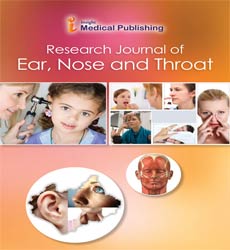Auditory Processing Disorders and Learning Disorders: diagnostic and therapeutic challenge
Abstract
BACKGROUND: The Auditory Processing Disorders (APD) is characterized by normal peripheral hearing, but abnormal processing of auditory information within the central auditory nervous system and the neurobiological activity that underlies that processing and gives rise to the electrophysiological auditory potentials.
Learning Disorders (LD) are diagnosed when a subject’s achievement on individually administered standardized tests in reading, mathematics or written expression is substantially below (defined as a discrepancy of more than two standard deviations from the mean) that expected for age, schooling and level of intelligence. Prevalence of APD in students diagnosed with LD is estimated to be as high but is still unclear the overlap between the APD and other developmental disorders. This lack of clarity is probably due to the use of multiple diagnostic criteria and different tests proposed that evaluate the same cognitive domains like memory, attention, speech production etc.
METHODS: The aim of our study is to present a cluster analysis to determine the overall profile of students that are tested for Dyslexia with the co-occurrence of poor performance on auditory skills. In absence of any audiometric hearing loss, they have been addressed for auditory processing assessment according to diagnostic criteria. We evaluate 70 patients (30 males and 40 females) aged between 17 and 55 years. The students were tested on cognitive, auditory, reading and language skills with an IQ assessment, Dyslexia assessment, phonological awareness screening, instrumental evaluation for hearing threshold. Exclusion criteria: IQ below the norm (<70 points) and the presence of neurological and sensory deficits.
RESULTS: Among 70 patients examined, 33% have poor SRT-PTA agreement because ITA Matrix test showed a SRT average of –3.8 dB SNR; of these 33%, 56% showed also a low score in repeating non-words with shielded mouth, 61% a speed less than 4th percentage in spelling and 39% less than the 5th percentage in the fusion test. Analyzing the profiles of the group with poor SRT-PTA agreement, we focusing on four fiftheen cases that are suspected for APD and we tested them. Only five subjects had a poor performance below two standard deviation on two tests according to diagnostic criteria, so we confirm an APD.
CONCLUSIONS: The clinical presentation of APD has much in common especially with speciï¬ÂÂÂÂc language impairment (SLI) and dyslexia and this occurrence suggests that may be a symptom of a more varied neurodevelopmental disorder. We conclude that all the patients with difficult on auditory skills with normal hearing threshold should be assess for an APD. The diagnosis of APD is still today a challenge that require a larger sample for further investigation.
Open Access Journals
- Aquaculture & Veterinary Science
- Chemistry & Chemical Sciences
- Clinical Sciences
- Engineering
- General Science
- Genetics & Molecular Biology
- Health Care & Nursing
- Immunology & Microbiology
- Materials Science
- Mathematics & Physics
- Medical Sciences
- Neurology & Psychiatry
- Oncology & Cancer Science
- Pharmaceutical Sciences
